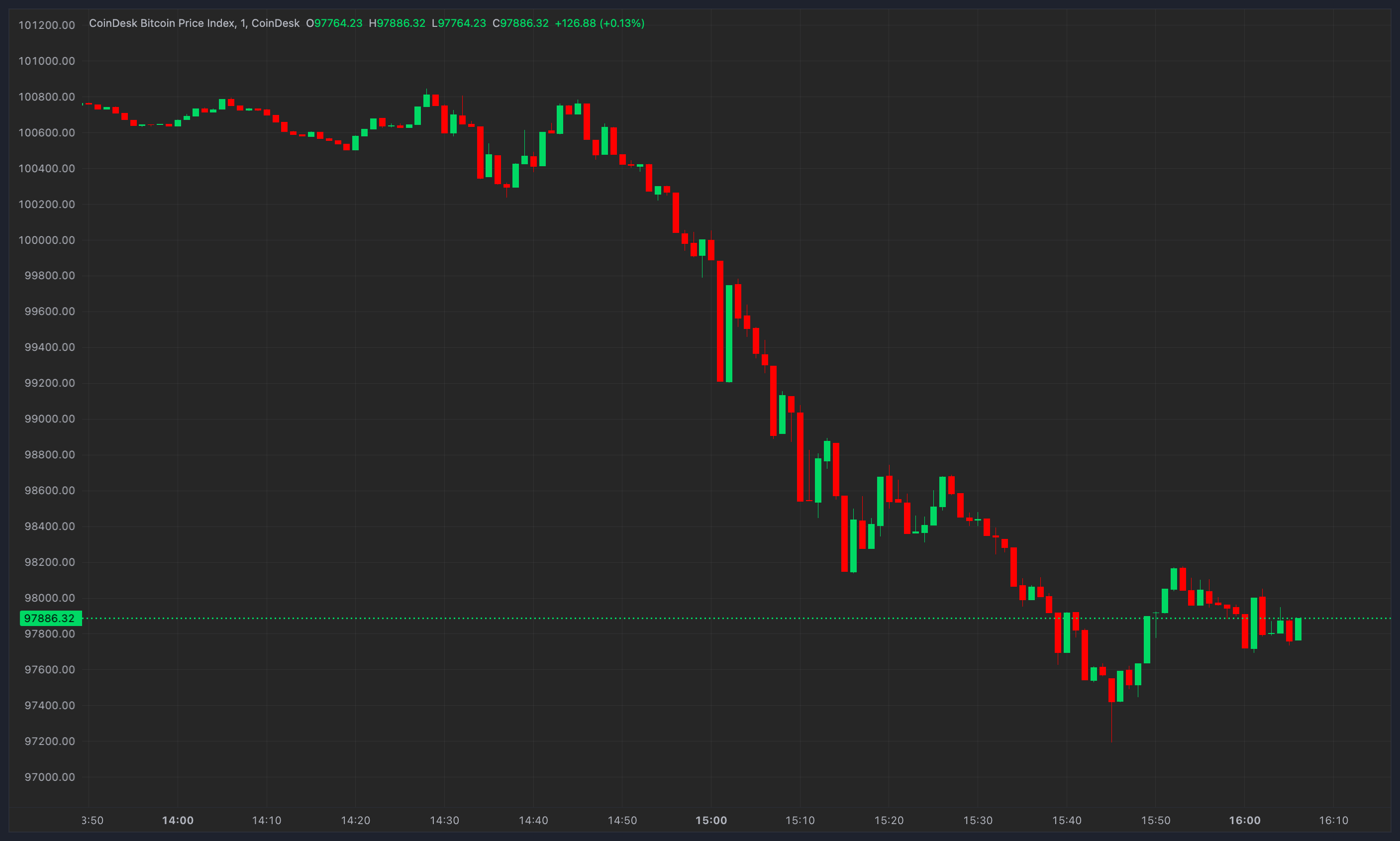Bitcoin (BTC) lost 25.4% in 48 hours, bottoming at $15,590 on Nov. 9 as investors rushed to exit positions after the second largest cryptocurrency exchange, FTX, halted withdrawals. More importantly, the sub $17,000 levels were last seen almost two years prior, and the fear of contagion became evident.
The move liquidated $285 million worth of leverage long (bull) positions, leading some traders to predict a potential downside of $13,800.
What an exciting time to be alive! Loving the volatility these elites are creating! They really wana buy LOW before the next bull cycle! Thank goodness we were ready months in advanced!
Are we gona hit that 13k target? Who cares, its a huge buy opportunity long term! $BTC #BTC pic.twitter.com/2v0ThmIoNG
— JD (@jaydee_757) November 14, 2022
As described by independent market analyst jaydee_757, the bearish trend continues to exert its pressure, with $17,200 as a resistance level. Still, such an analysis provides no guarantee that the ultimate $13,800 bottom will be hit.
Curiously, the price action coincided with improving conditions for global equity markets on Oct. 4, as the S&P 500 index gained 6.4% between Nov. 10 and Nov. 11 and the tech-heavy Nasdaq Composite rallied 9.5%. Hence, at least from a technical perspective, Bitcoin completely decoupled from traditional finance.
Additional uncertainty on Bitcoin has been brought on by Grayscale Bitcoin Trust (GBTC) trading on over-the-counter stock markets after the $11.4 billion fund discount to its assets surpassed 40%.
watching GBTC liquidity and lenders exposure to said product for contagion risk
seems someone is selling a lot of GBTC
discount is now >40% and widening, implied BTC price is $9K, and a lot of GBTC is sitting in toxic places atm
— Vance Spencer (@pythianism) November 11, 2022
As noted by Vance Spencer, the implied BTC price according to the funds’ trading is below $9,000, and pressure should continue if some holders use their shares as collateral for loans.
Still, the negative sentiment that caused Bitcoin to break below $20,000 does not mean professional investors are bearish at the current price levels.
Margin traders did not close their longs
Monitoring margin and options markets provide excellent insight into how professional traders are positioned, allowing investors to borrow cryptocurrency to leverage their trading position.
For instance, one can increase exposure by borrowing stablecoins to buy an additional Bitcoin position. On the other hand, Bitcoin borrowers can only short the cryptocurrency as they bet on its price declining. Unlike futures contracts, the balance between margin longs and shorts isn’t always matched.

The above chart shows that OKX traders’ margin lending ratio has increased from Nov. 8 to Nov. 10, signaling traders did not close their leverage longs despite the 25.4% price correction.
Furthermore, the metric continues to favor stablecoin borrowing by a wide margin, indicating traders have been holding bullish positions.
Option markets flipped bearish
Traders should scan options markets to understand whether Bitcoin can reclaim the $18,500 support. The 25% delta skew is a telling sign whenever arbitrage desks and market makers are overcharging for upside or downside protection.
The indicator compares similar call (buy) and put (sell) options and will turn positive when fear is prevalent because the protective put options premium is higher than risk call options.
The skew indicator will move above 10% if traders fear a Bitcoin price crash. On the other hand, generalized excitement reflects a negative 10% skew.

As displayed above, the 25% delta skew had been below 10% since Oct. 26, but it quickly moved above that threshold on Nov. 8, suggesting options traders were pricing a higher risk of unexpected price dumps.
Whenever this metric stands above 10%, it signals that traders are fearful and reflects a lack of interest in offering downside protection.
Related: Crypto.com’s CRO is in trouble, but a 50% price rebound is in play
FUD dismissal does not happen overnight
Despite the bearish Bitcoin options indicator, the OKX margin lending rate showed whales and market makers maintaining bullish bets. The contagion fear might explain the mixed feeling as investors struggle to interpret recent movements by the Crypto.com exchange, including an “accidental” transfer of 320,000 Ether (ETH) to Gate.io.
Run on Crypto com starts after FTX collapse. Investors began pulling funds from Singapore-based crypto exchange in a sign that the dramatic collapse of FTX is sparking contagion among exchanges. Cronos, token underpinning Crypto com business, has plunged. https://t.co/evk4J1vnnL pic.twitter.com/wMJmvch2D0
— Holger Zschaepitz (@Schuldensuehner) November 14, 2022
Analyst Holger Zschaepitz’s post describes investors’ current sentiment as unwilling to take risks on centralized exchanges offering similar products and services from the now-bankrupt FTX.
Consequently, derivatives are reflecting low confidence in regaining the $18,500 support until more data shows that the cryptocurrency ecosystem’s liquidity has been restored.
The views and opinions expressed here are solely those of the author and do not necessarily reflect the views of Cointelegraph.com. Every investment and trading move involves risk, you should conduct your own research when making a decision.
Read More: cointelegraph.com









 Bitcoin
Bitcoin  Ethereum
Ethereum  Tether
Tether  XRP
XRP  Solana
Solana  Dogecoin
Dogecoin  USDC
USDC  Cardano
Cardano  Lido Staked Ether
Lido Staked Ether  TRON
TRON  Avalanche
Avalanche  Sui
Sui  Wrapped stETH
Wrapped stETH  Toncoin
Toncoin  Chainlink
Chainlink  Shiba Inu
Shiba Inu  Stellar
Stellar  Wrapped Bitcoin
Wrapped Bitcoin  Hedera
Hedera  Polkadot
Polkadot  WETH
WETH  Bitcoin Cash
Bitcoin Cash  LEO Token
LEO Token  Uniswap
Uniswap  Hyperliquid
Hyperliquid  Pepe
Pepe  Litecoin
Litecoin  Wrapped eETH
Wrapped eETH  NEAR Protocol
NEAR Protocol  Ethena USDe
Ethena USDe  USDS
USDS  Aptos
Aptos  Internet Computer
Internet Computer  Aave
Aave  Render
Render  Mantle
Mantle  Bittensor
Bittensor  Cronos
Cronos  POL (ex-MATIC)
POL (ex-MATIC)  Ethereum Classic
Ethereum Classic  Virtuals Protocol
Virtuals Protocol  WhiteBIT Coin
WhiteBIT Coin  Artificial Superintelligence Alliance
Artificial Superintelligence Alliance  Tokenize Xchange
Tokenize Xchange  MANTRA
MANTRA  Monero
Monero  Arbitrum
Arbitrum